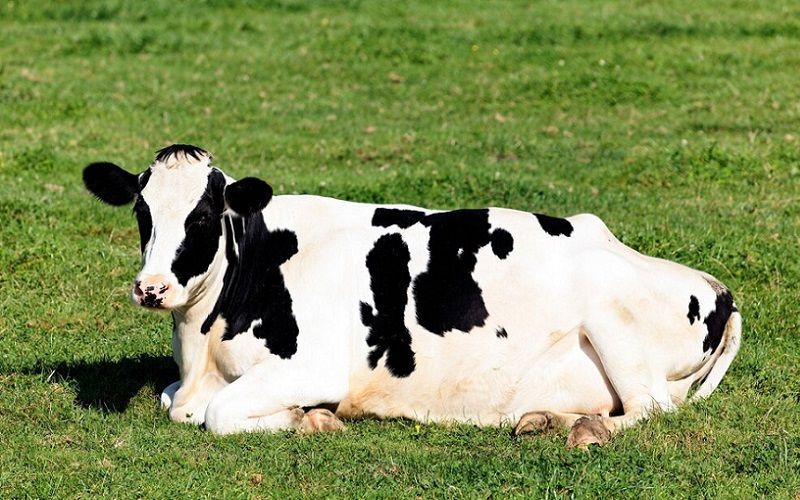USDA Mandates Dairy Cattle Testing Amid Concerns Over HPAI Spread
Sourse: The DairyNews
The United States Department of Agriculture (USDA) has implemented mandatory testing for dairy cattle as part of efforts to contain the spread of highly pathogenic avian influenza (HPAI) H5N1 within the nation's dairy herds. This decision follows alarming findings indicating a broader presence of the virus, prompting heightened vigilance across the agricultural sector.

Recent data from Ohio State University's laboratory revealed genetic material of the H5N1 virus in 38% of retail milk samples, suggesting a more widespread outbreak than previously reported. In response, the USDA issued a Federal Order on Tuesday, requiring several measures to mitigate the risk posed by HPAI.
Effective immediately, dairy cattle must undergo testing for Influenza A virus at approved laboratories before interstate movement. Owners of herds with positive test results must provide epidemiological information, including animal movement tracing. Additionally, stringent conditions specified by the Animal and Plant Health Inspection Service (APHIS) must be adhered to for interstate cattle movement.
Furthermore, USDA is mandating labs and state veterinarian offices to report Influenza A nucleic acid detection results to APHIS, facilitating comprehensive monitoring of the virus's prevalence. Previously, HPAI H5N1 in livestock was not a reportable disease, but the evolving situation necessitates enhanced surveillance and reporting mechanisms.
While the virus primarily affects cows within the same herd and demonstrates potential transmission to poultry, recent cases indicate its presence in asymptomatic cattle, raising concerns about interspecies spread. USDA reassures the public that while the virus has demonstrated adaptation to mammals, there's no evidence of increased transmissibility to humans.
In light of the discovery of virus fragments in retail milk samples, the Food and Drug Administration (FDA) affirms the safety of pasteurized milk, emphasizing the effectiveness of pasteurization in deactivating pathogens. Dr. Andrew Bowman from Ohio State University underscores that viral RNA detected in milk poses no risk to human health and serves as an indicator of the virus's prevalence in dairy herds.
Despite ongoing efforts to contain the outbreak, uncertainties persist regarding the virus's transmission dynamics among livestock. Researchers emphasize the complexity of influenza viruses and the challenges associated with tracking transmission routes in new host species.
As scientists continue to gather data, USDA remains committed to implementing proactive measures to safeguard the nation's food supply and mitigate the impact of HPAI on the agricultural industry.
Effective immediately, dairy cattle must undergo testing for Influenza A virus at approved laboratories before interstate movement. Owners of herds with positive test results must provide epidemiological information, including animal movement tracing. Additionally, stringent conditions specified by the Animal and Plant Health Inspection Service (APHIS) must be adhered to for interstate cattle movement.
Furthermore, USDA is mandating labs and state veterinarian offices to report Influenza A nucleic acid detection results to APHIS, facilitating comprehensive monitoring of the virus's prevalence. Previously, HPAI H5N1 in livestock was not a reportable disease, but the evolving situation necessitates enhanced surveillance and reporting mechanisms.
While the virus primarily affects cows within the same herd and demonstrates potential transmission to poultry, recent cases indicate its presence in asymptomatic cattle, raising concerns about interspecies spread. USDA reassures the public that while the virus has demonstrated adaptation to mammals, there's no evidence of increased transmissibility to humans.
In light of the discovery of virus fragments in retail milk samples, the Food and Drug Administration (FDA) affirms the safety of pasteurized milk, emphasizing the effectiveness of pasteurization in deactivating pathogens. Dr. Andrew Bowman from Ohio State University underscores that viral RNA detected in milk poses no risk to human health and serves as an indicator of the virus's prevalence in dairy herds.
Despite ongoing efforts to contain the outbreak, uncertainties persist regarding the virus's transmission dynamics among livestock. Researchers emphasize the complexity of influenza viruses and the challenges associated with tracking transmission routes in new host species.
As scientists continue to gather data, USDA remains committed to implementing proactive measures to safeguard the nation's food supply and mitigate the impact of HPAI on the agricultural industry.
Key News of the Week











